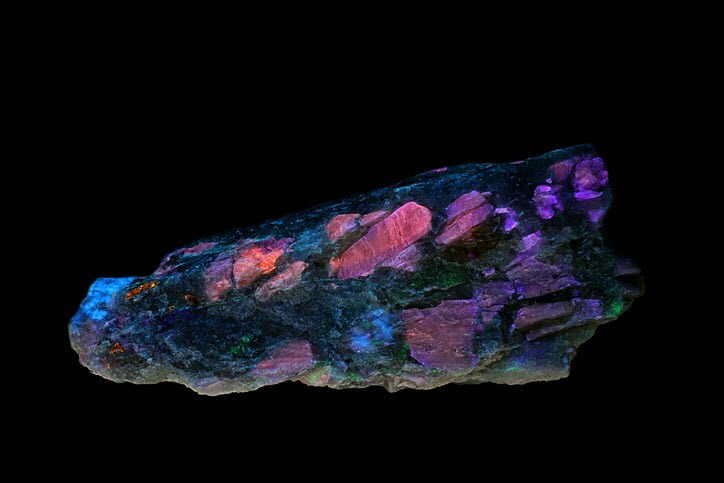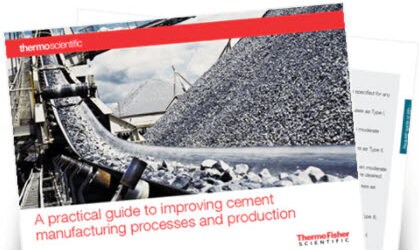
Lithium mineral spodumene, major source of lithium
This increase in exploration may have to do with the U.S. Department of the Interior, in coordination with other executive branch agencies, including lithium on its list of 35 critical minerals. According to the USGS, lithium supply security has become a top priority for technology companies in the United States and Asia over the past couple of years. Strategic alliances and joint ventures among technology companies and exploration companies continue to be established to ensure a reliable, diversified supply of lithium for battery suppliers and vehicle manufacturers.
Lithium – atomic number 3 – is a soft, silvery-white alkali metal and one of the key components of clean energy initiatives. Lithium batteries can power electric cars, trucks, and electronics, as well as store energy produced by solar and wind power. A recent article in Science News predicted that global demand for the metal is expected to rise at least 300 percent in the next 10 to 15 years, in large part because sales of electric vehicles are expected to increase dramatically. As a result, mining companies are focusing on finding lithium in concentrated areas so it can be mined economically.
Until recently, the only lithium production in the United States was from a brine operation in Nevada. Lithium is a common but poorly concentrated mineral, so it is difficult to obtain. About half of the world’s supply of lithium is produced by the evaporation of highly concentrated lithium brine, a relatively simple but time consuming method.
However, a new lithium mine is working to get permits to open strip mining operations in North Carolina. The Carolina Tin-Spodumene Belt near Charlotte was home to much of the US supply of lithium half a century ago, but producers found that it was cheaper to mine South America and Australia deposits. Now The Charlotte Observer reports that a recently-formed company is applying for permits to launch an open-pit lithium mining operation that it says would be the only one of its type in the United States.
A Nevada company that extracts lithium from underground brine deposits produced the only U.S. lithium in 2018. Piedmont Lithium says it would be the nation’s only hard-rock mine, extracting lithium from a mineral, spodumene, that is found in rock called pegmatite….The open-pit mine it plans, similar to a quarry, will be as much as 500 feet deep.
However, the state Department of Environmental Quality can deny the operating permit for any number of reasons, including that the mine could pose hazards to neighboring property or hurt the environment.
Pegmatites are igneous rocks that contain exceptionally large crystals and sometimes minerals, such as spodumene which is an ore of lithium. Traditional hard-rock mining of lithium-bearing pegmatite and spodumene is a costly and time-intensive endeavor, but the lithium concentrate is considerably higher, making these deposits competitive with brine deposits. Five spodumene operations in Australia and two brine operations each in Argentina and Chile accounted for the majority of world lithium production.
When looking for metal elements, portable X-ray fluorescence (XRF) analyzers used in mining provide assay data within seconds, allowing for real-time ore deposit modeling and ore grade control. Traditional mining sample analysis often involves a costly and time-consuming process of sending samples to off-site laboratories and waiting days, even weeks, for the results. Handheld XRF analyzers can provide laboratory-grade sample analysis for rapid feedback during drilling operations, or to prequalify samples for off-site lab analysis. Whilst direct analysis of Lithium is not possible with handheld XRF due to x-ray physics limitations, latest generation instruments can be used effectively to identify a key suite of whole rock and associated pathfinder elements, namely; K, Ca, Rb, Sr, Y, Nb, Sn, Cs, Ta +/- Sb, W, Bi, As, Ga, Tl + rare earth elements (REE’s) of La & Ce. Some of these analyzers allow miners and geologists to identify element concentrations at or below the averages naturally found in the earth’s crust, detecting even the most subtle geochemical anomalies.
The USGS reports that “substitution for lithium compounds is possible in batteries, ceramics, greases, and manufactured glass. Examples are calcium, magnesium, mercury, and zinc as anode material in primary batteries; calcium and aluminum soaps as substitutes for stearates in greases; and sodic and potassic fluxes in ceramics and glass manufacture.”
Another substitute could be recycling, but unlike some other metals used in manufacturing, lithium is not easily recycled. The expense of separating out a small quantity of lithium from recycled batteries, while possible in some situations, is not justified by the value of lithium gained – though there are continuing efforts to improve the process. (Read Lithium Supply: Could Recycling Be the Answer?)
Editor’s Note: Explore more aspects of mining, exploration, processing, and analysis in the Cement, Coal, and Minerals Learning Center.






Leave a Reply